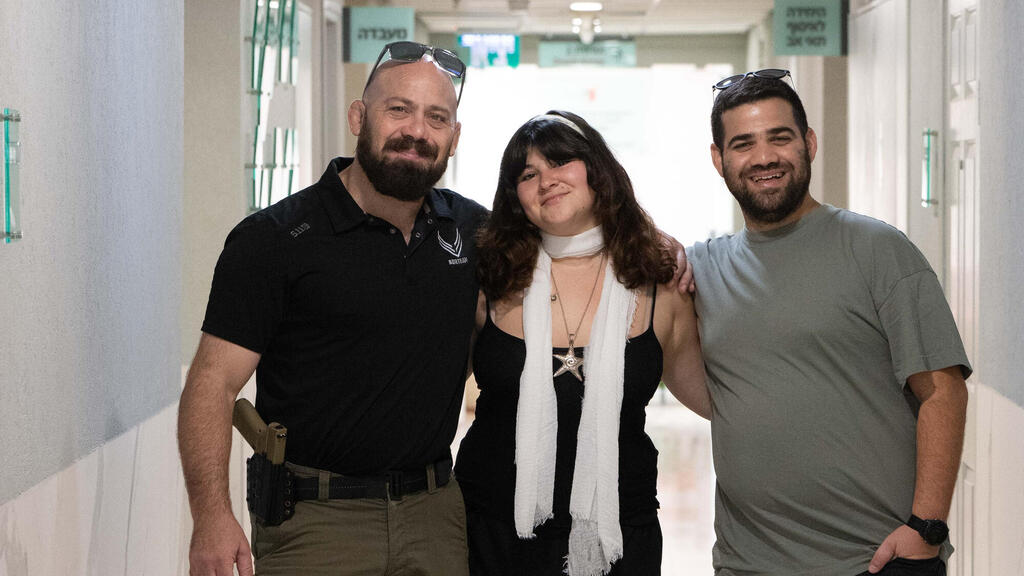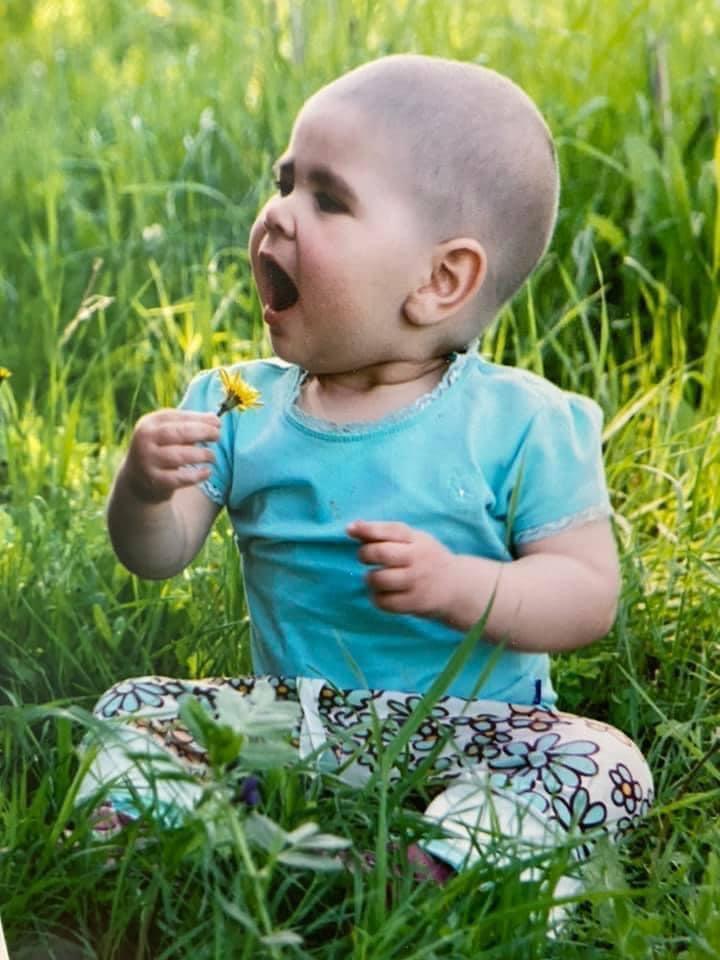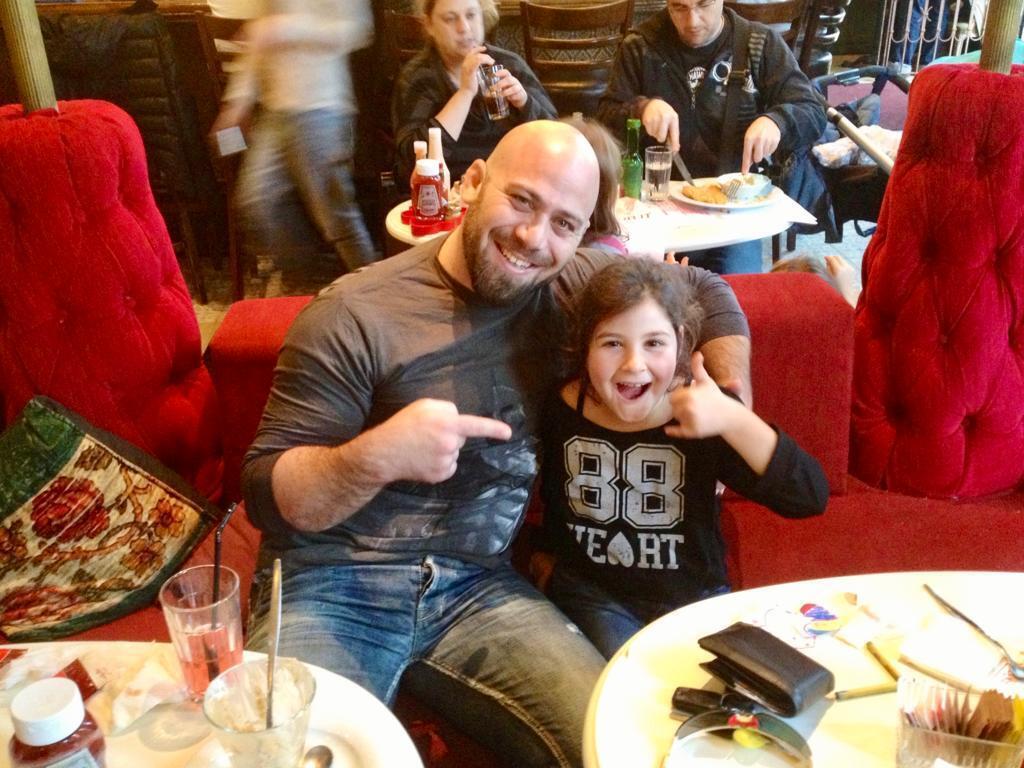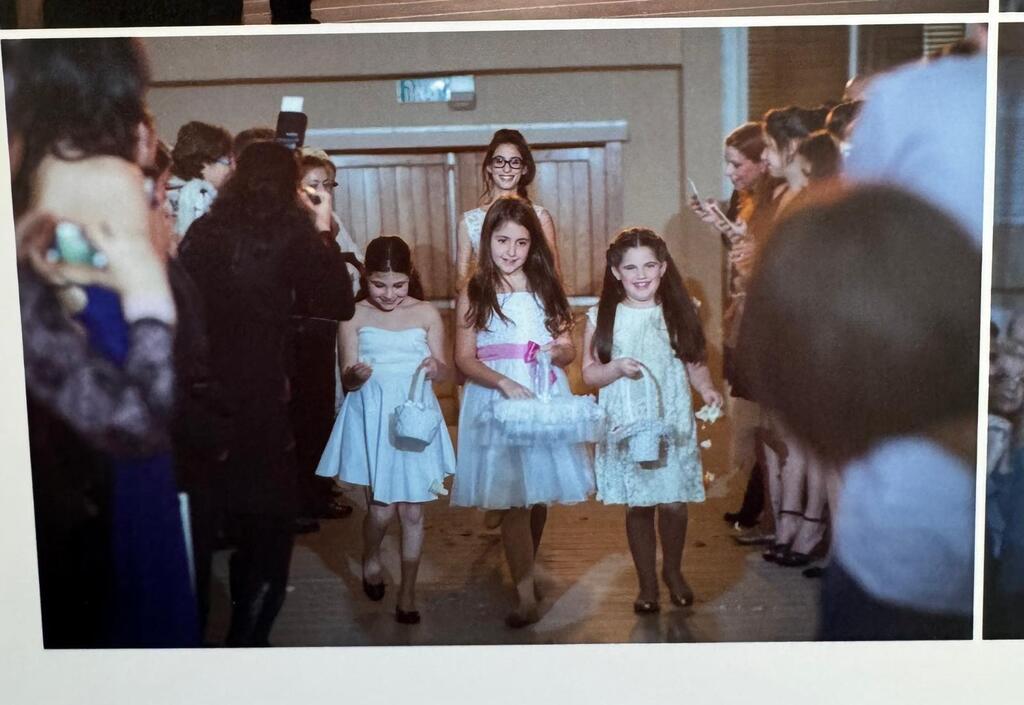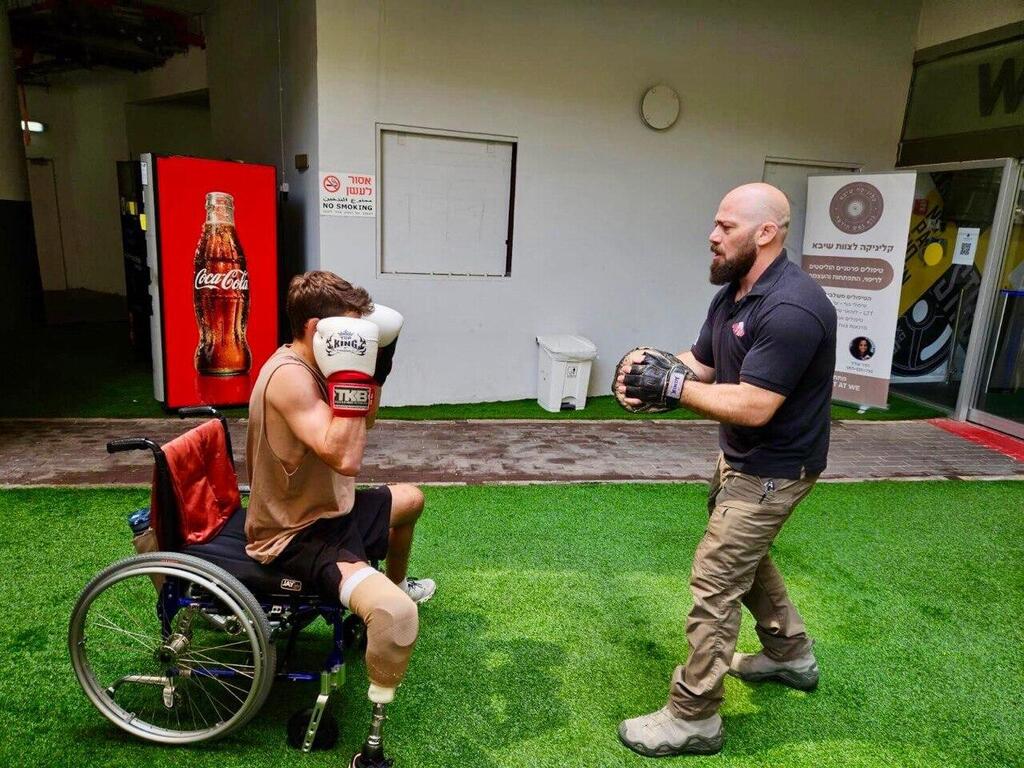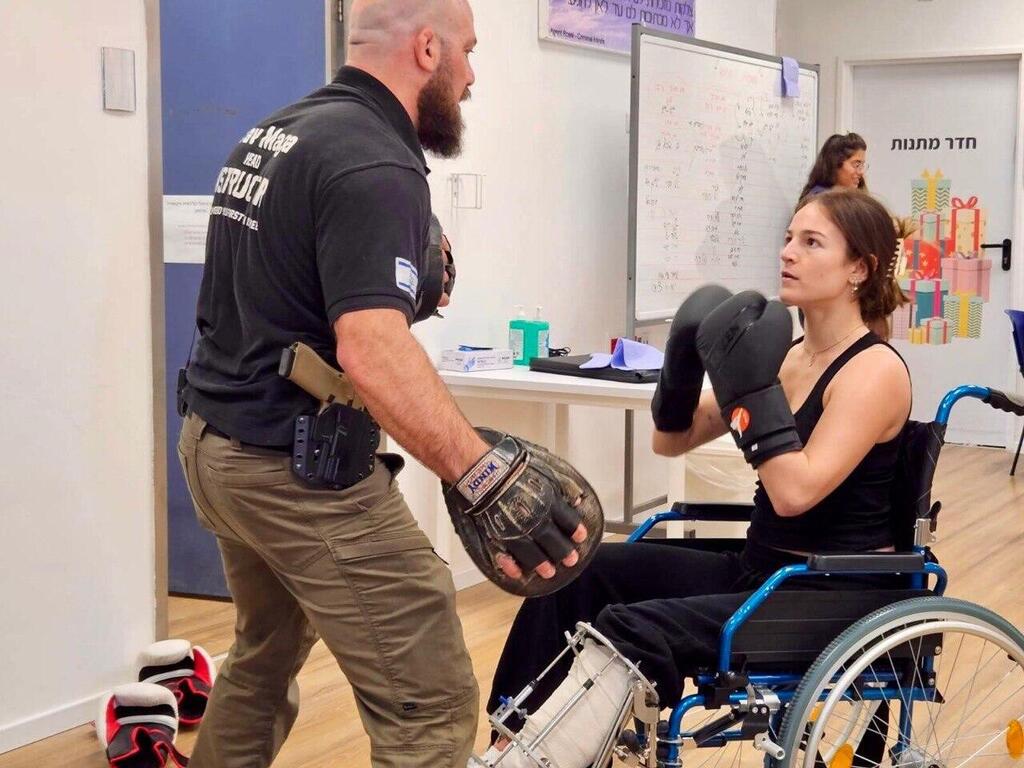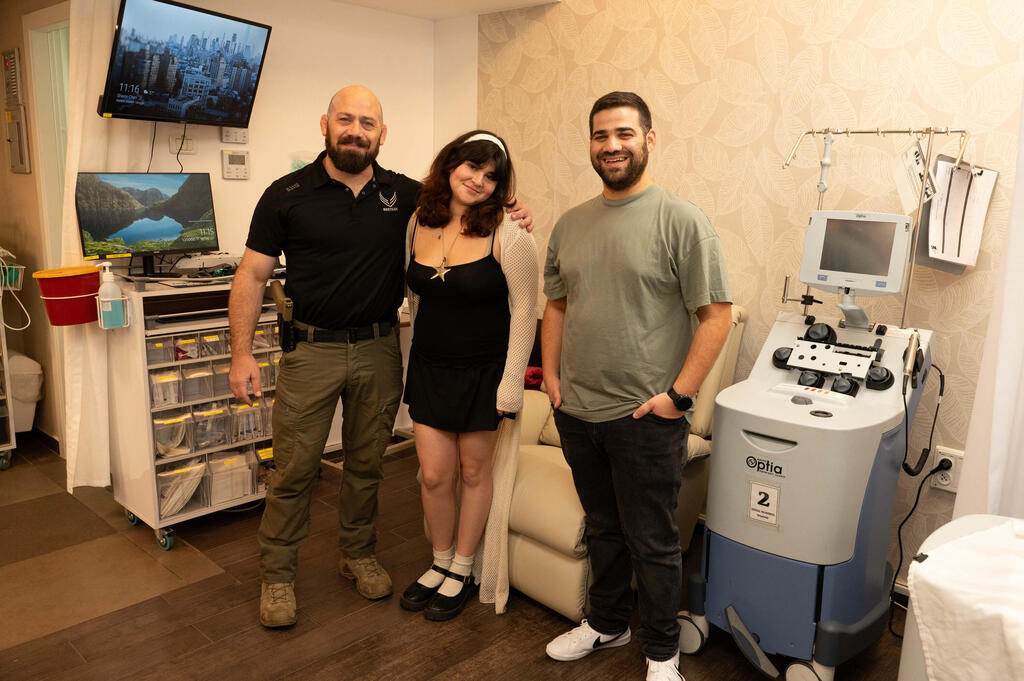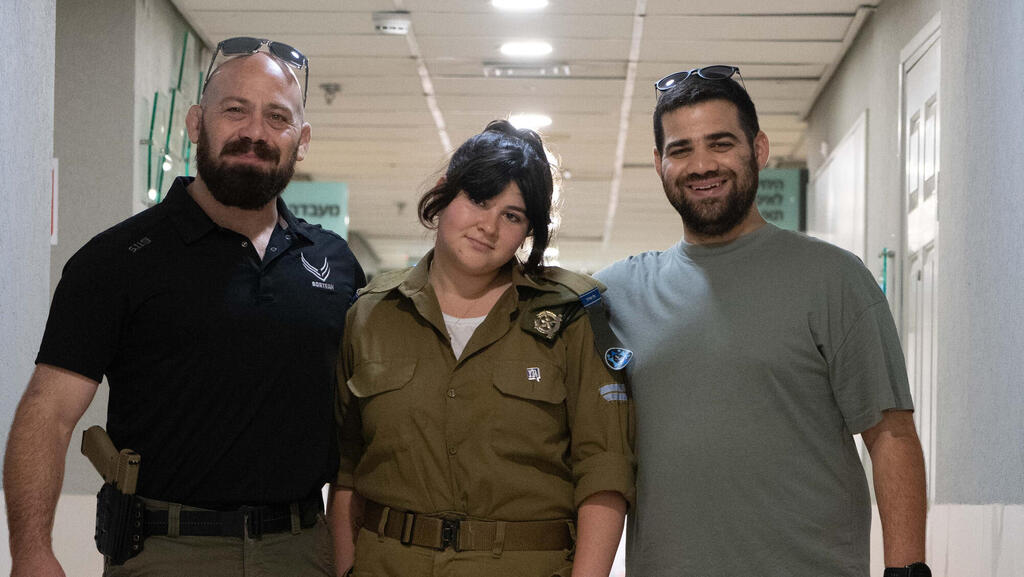Seventeen years after Sagi Dovev, 46, gave life to Liri Ben Meir, 19, through a bone marrow donation, they met again at the Ezer Mizion organization complex. This time, they were joined by Shahar, 28, Sagi's nephew, who donated bone marrow to a leukemia patient.
"I was proud of Shahar even before his decision to donate, but now I'm even prouder of him," says Sagi, who now assists wounded soldiers who have arrived for rehabilitation. Once a donor, always a donor.
"What a déjà vu," calls Dovev to Ben Meir as they meet in the corridors of the National Bone Marrow Donor Registry of Ezer Mizion. The exact same corridor where they first met 17 years ago, after Sagi gave Liri a life-saving bone marrow donation. This time, Shahar, Sagi's nephew, joined the meeting. He was recently informed of a perfect match between his sample and a leukemia patient in her 50s, and performed the donation hoping to save her life.
In 2006, when Liri was just one year and one day old, her mother Sharon received the diagnosis of her daughter's illness - hemophagocytic lymphohistiocytosis. "It's a rare disease, it also takes a long time to identify it. Only on Liri's third hospitalization was she diagnosed. They started treating according to the protocol, which is similar to cancer treatment, with chemotherapy. They didn't know if the treatment would work or not. The doctor's advice in the second opinion we received was to start looking for a bone marrow donation," Sharon shares.
She remembers that period when finding a bone marrow donor felt like an impossible mission. "Every day, a story was published about a patient looking for a suitable donor. When I realized that my Liri also needed a donation - I shut myself in the house for three days and couldn't stop crying."
In the same month Liri was diagnosed, Sagi joined the bone marrow registry. He was first exposed to the activities of Ezer Mizion when he was a 16-year-old teenager. "I started as a volunteer at Schneider Children's Hospital with the children treated in the oncology departments. Twice a week I came in the afternoon to visit them, to help with whatever was needed. There I was exposed to the organization's activities and joined the fundraising campaigns, we led campaigns calling on people to donate samples to join the registry," Sagi recounted.
And so, in December of that year, four months after Sagi joined the registry and two months after Liri's family submitted the search request for a suitable donor to the organization - the perfect match between Sagi and Liri was found. "I was shocked at how fast it was," Sharon recalls that joyous moment when she received the long-awaited call that would save her daughter's life.
The first meeting between the two took place a year after the donation, in December 2007. "The story of my illness and Sagi's donation was always on the table. I happily told people about it, as someone who went through it and not as something to be ashamed of," Liri recounts.
Throughout all the years, from then until today, Sagi and Liri have accompanied each other through their life stations. "I was his bridesmaid at his wedding," Liri remembers.
"Sagi is already much more than the one who saved Liri - he's become a family member of ours," Sharon added.
Liri arrives at the meeting in her IDF uniform, proudly wearing her Galgalatz pin. A year and a half before the war broke out, Sagi completed his career service as an officer in an elite unit. On the morning of October 7, he headed south, and when he realized that the unit's soldiers had been evacuated to the hospital, he changed direction and drove to receive them at Sheba Hospital. For two months, he was on reserve duty at the base, assisting with logistical missions and liaising with the families of the wounded. In the end, he chose to stay at the hospital to help the soldiers who moved to the rehabilitation departments.
"When the wounded soldiers were admitted for rehabilitation, I thought about how I could help them go through the process faster. I started giving them training sessions, each according to their needs and abilities - boxing, wrestling, Krav Maga training, jiu-jitsu. It became popular, soldiers from other units approached me, hostages released from captivity. I'm doing it as a full-time job," Sagi shared and proudly showed a video where he trained a double-leg amputee before receiving prosthetics.
Last September, Liri volunteered for her military role as a studio producer at Galgalatz and in the station's digital content. "At the beginning of the war, it was difficult, people contacted us and shared traumatic stories from the war, what they had been through since October 7. I really wanted to be there for them to help. I listened and supported as much as I could. There was no other choice, they needed us at that moment. It was a lot to contain, it made me feel very meaningful," Liri shared.
Shahar Dovev, Sagi's nephew, also remembers that cursed Saturday morning when he was called up for reserve duty. When he enlisted in the IDF in 2007, as a fighter in the 890th Battalion of the Paratroopers Brigade, Shahar joined the bone marrow registry as part of the enlistment chain at the recruitment office. Last April, he received a surprising call while on vacation abroad.
"At first I was in shock, seven years had passed since I joined the registry. It was clear to me that I would do it. The story of my uncle Sagi's donation has accompanied the family all these years. But regardless, I know I would have gone for it, no matter what. I was raised to donate and help, I have an opportunity to try to give of myself and save a life," Shahar recounted.
Giving life
This month, Shahar arrived at the collection center at Ezer Mizion's Oranit House to give his bone marrow donation to a woman in her 50s fighting leukemia. Days later, Shahar had the privilege of accompanying his wife Avital to the birth of their firstborn daughter, Noa.
"When I arrived to give the donation, I received a bracelet like in a hospital admission. I told those around me - I hope that within a week I'll have a bracelet that gives life and a bracelet that brings life. And so it was, within a week and two days," he said excitedly.
"The experience of donation 'gives life' in two ways - hopefully for the patient who will receive the donation and also for myself, knowing that I did it when I had the opportunity. The second bracelet was given to me when we received the additional life to the family," he added.
When asked if he would be interested in meeting the recipient who will receive his donation, Shahar responds positively. "She could be my mother's age, I'd be happy to help with whatever I can for her as well."
Beside him, the living example of two who chose to meet after the donation and developed a close relationship for almost two decades. "I was proud of Shahar even before the decision to donate, but now I'm even prouder of him," says Sagi.
Liri adds: "I myself don't have the option to make a donation, but if I did - I would be happy to. I think it's a beautiful and brave act, and it's important that those who can do it."
Sagi responds with a smile: "I'm waiting to be a groomsman at your wedding." Liri doesn't stay indebted: "Maybe your daughter will be."
Dr. Bracha Zisser, director of Ezer Mizion's National Bone Marrow Donor Registry: "Over the years, we see the longing of donors and recipients for the first joint meeting a year after the donation and the moving connection between the parties. But a special relationship like the one formed between Sagi and Liri is rare and special, as they have essentially become a shared family for almost 20 years. When Shahar sees up close this privilege of saving lives, it was only natural that he wouldn't think twice when the call came from the registry. There's no greater sense of satisfaction than this."
Get the Ynetnews app on your smartphone:


